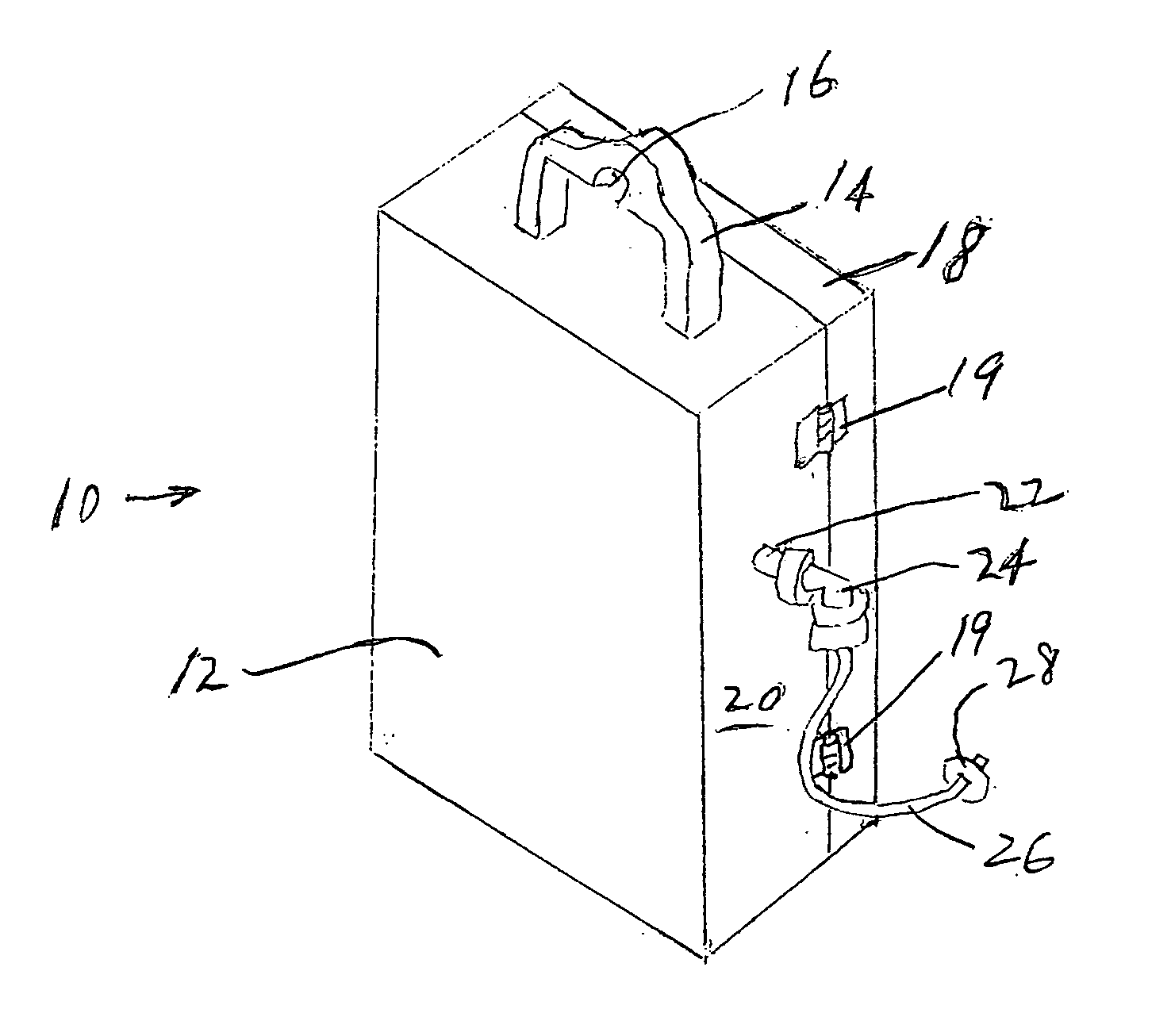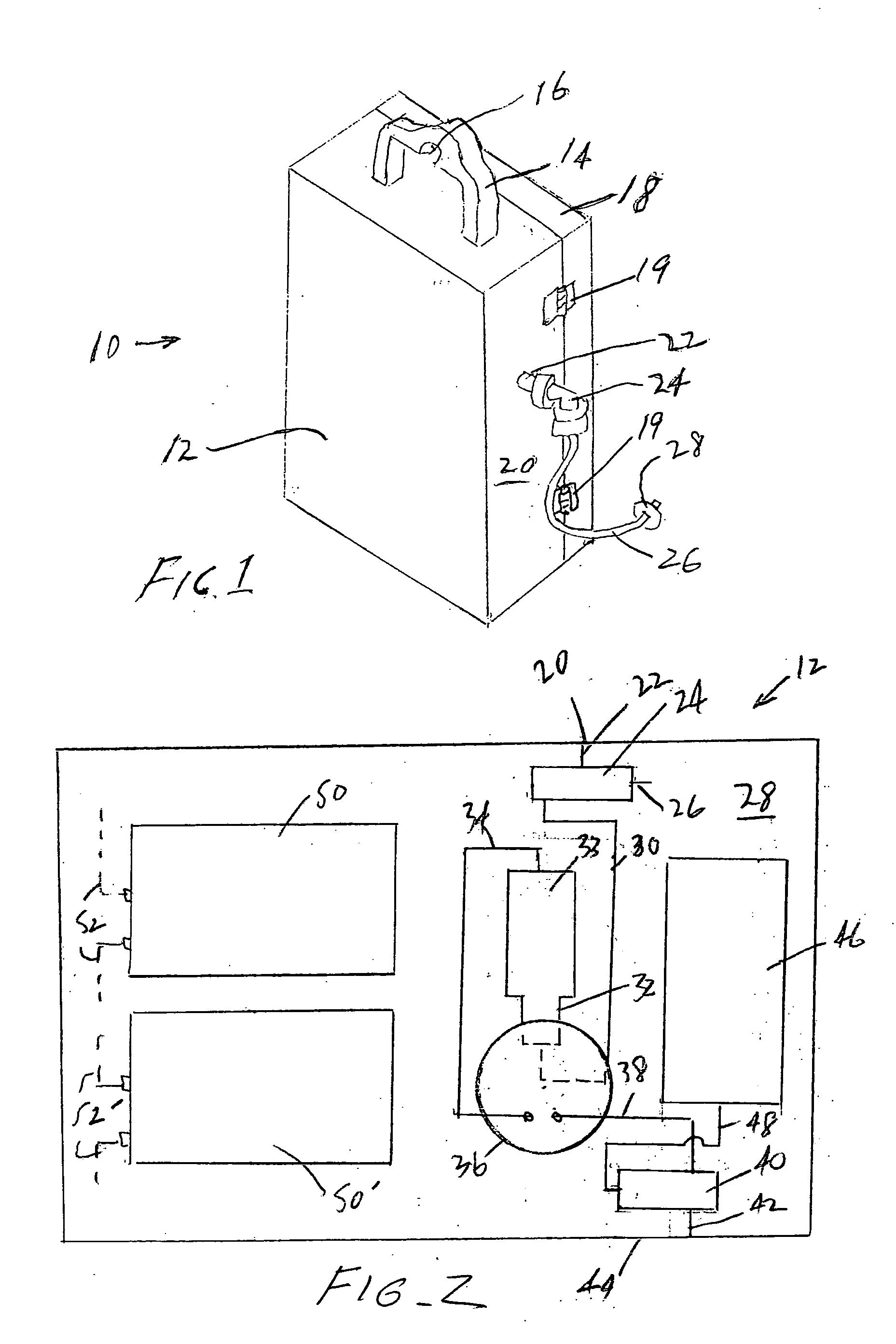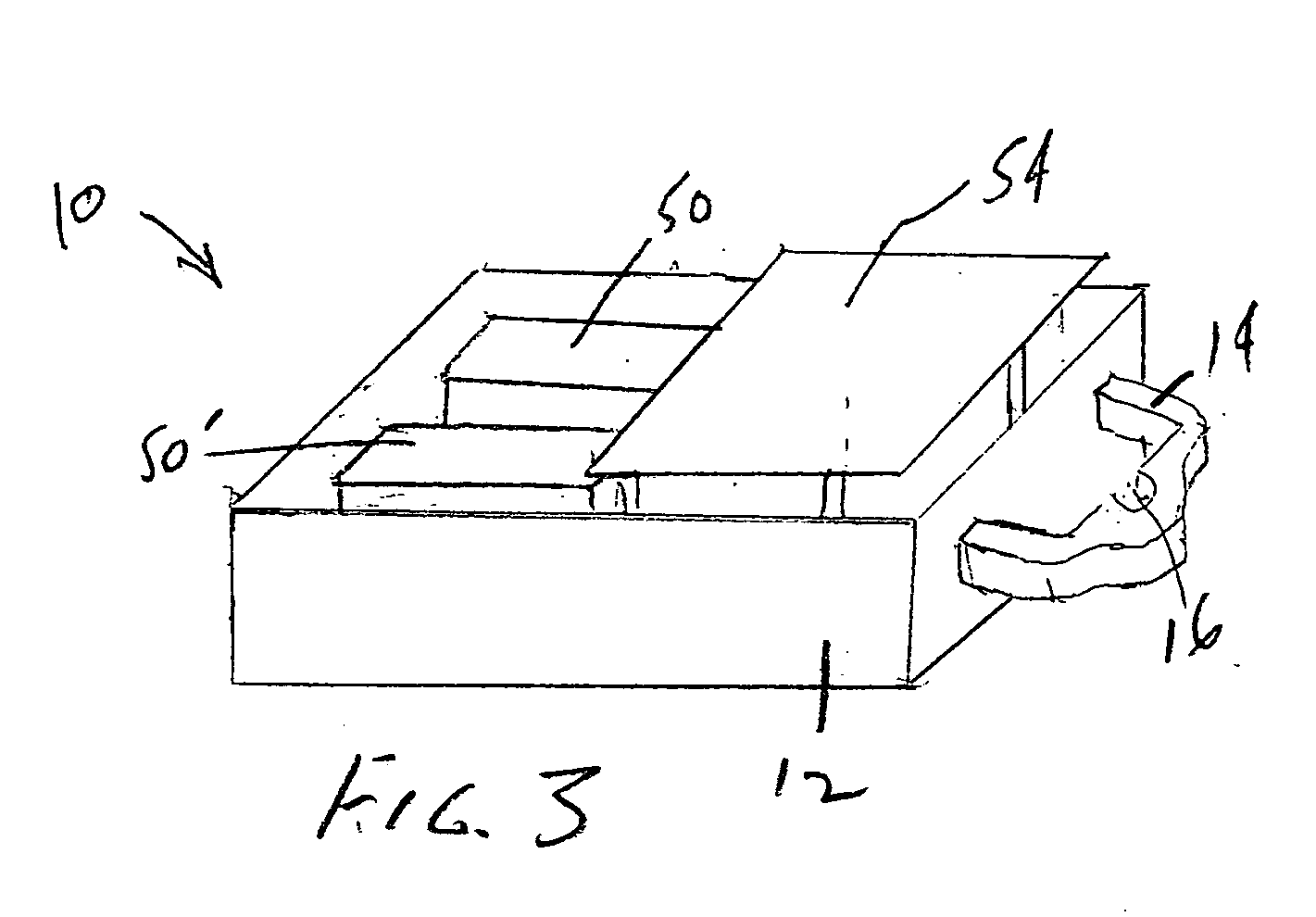Harsh environment gas sensor apparatus and method
a gas sensor and harsh environment technology, applied in the field of remote continuing discrete monitoring, can solve the problems of affecting the function of the gas sensor, affecting the safety of the equipment and materials exposed, and affecting the safety of the environment, so as to prevent the saturation of the gas sensor
- Summary
- Abstract
- Description
- Claims
- Application Information
AI Technical Summary
Benefits of technology
Problems solved by technology
Method used
Image
Examples
Embodiment Construction
[0037] As required, detailed embodiments of the present invention are disclosed herein; however, it is to be understood that the disclosed embodiments are merely exemplary of the invention which may be embodied in various forms. Therefore, specific structural and functional details disclosed herein are not to be interpreted as limiting, but merely as a basis for the claims and as a representative basis for teaching one skilled in the art to variously employ the present invention in virtually any appropriately detailed structure.
[0038] Reference is now made to the drawings, wherein like characteristics and features of the present invention shown in the various figures are designated by the same reference numerals.
[0039]FIG. 1 is a prospective view of the invention 10. It includes a rectilinear, windowless housing having a rectangular footprint 12. It includes a carrying handle 14. Exposed at the top thereof is notch 16 allowing the inventive apparatus 10 to be suspended in a confin...
PUM
| Property | Measurement | Unit |
|---|---|---|
| time | aaaaa | aaaaa |
| current | aaaaa | aaaaa |
| concentration | aaaaa | aaaaa |
Abstract
Description
Claims
Application Information
 Login to View More
Login to View More - R&D
- Intellectual Property
- Life Sciences
- Materials
- Tech Scout
- Unparalleled Data Quality
- Higher Quality Content
- 60% Fewer Hallucinations
Browse by: Latest US Patents, China's latest patents, Technical Efficacy Thesaurus, Application Domain, Technology Topic, Popular Technical Reports.
© 2025 PatSnap. All rights reserved.Legal|Privacy policy|Modern Slavery Act Transparency Statement|Sitemap|About US| Contact US: help@patsnap.com



